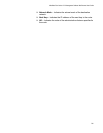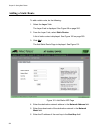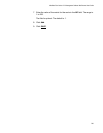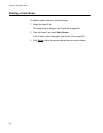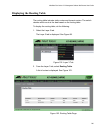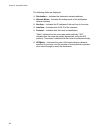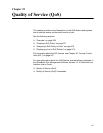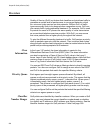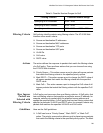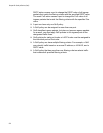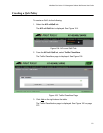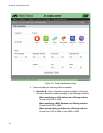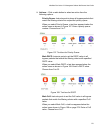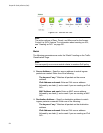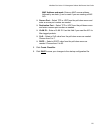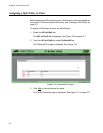
AlliedWare Plus Version 2.2.4 Management Software Web Browser User’s Guide
269
Filtering Criteria QoS policies identify packets using filtering criteria. The AT-8100 Web
Interface offers seven criteria:
Source and destination IP addresses
Source and destination MAC addresses
Source and destination TCP ports
Source and destination UDP ports
VLAN IDs
CoS value
DSCP value
Actions The action defines the response to packets that match the filtering criteria
of a QoS policy. There are three actions that you can choose from using
the AT-8100 Web Interface:
Priority Queue— This action causes a port to place all ingress packets
that match the filtering criteria to the specified priority queue.
Mark DSCP— This action causes a port to change the DSCP value of
all ingress packets that match the filtering criteria with the specified
DSCP value.
Mark CoS— This action causes a port to change the CoS value of all
ingress packets that match the filtering criteria with the specified CoS
value.
How Ingress
Packets are
Selected with
Filtering Criteria
A QoS policy can have more than one filtering criterion. A QoS policy that
has one filtering criterion that specifies a particular source IP address, for
example, selects only packets with the specified source address and
applies the specified action. A QoS policy that has two filtering criteria that
specified a particular VLAN ID and DSCP value, for example, selects only
packets that matches the specified VLAN ID and CoS value.
Guidelines Here are the QoS guidelines:
A QoS can have a “Priority Queue,” “Mark DSCP,” or “Mark CoS”
action. The priority queue action allows a port to place ingress packets
that match the filtering criteria to the specified priority queue. The Mark
Table 9. Classifier Number Ranges for QoS
Filtering Criterion Classifier Number Range
Specifying an IPv4 address 3000 - 3699
Specifying an MAC address 4000 - 4699
Specifying no address 3000 - 3699 and 4000 - 4699



